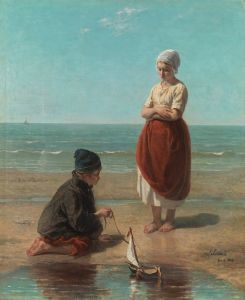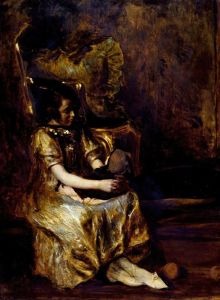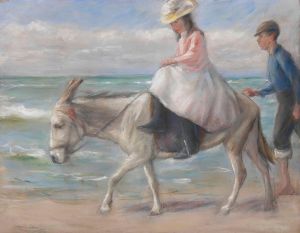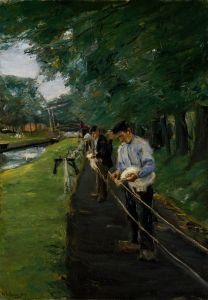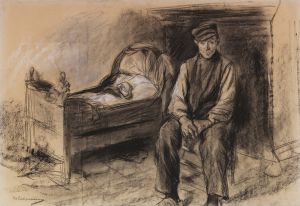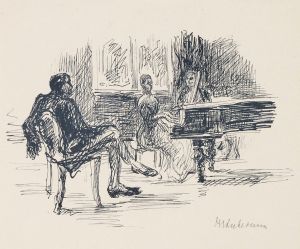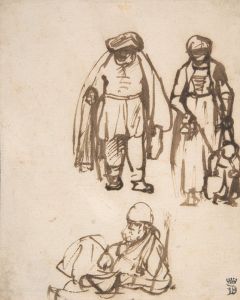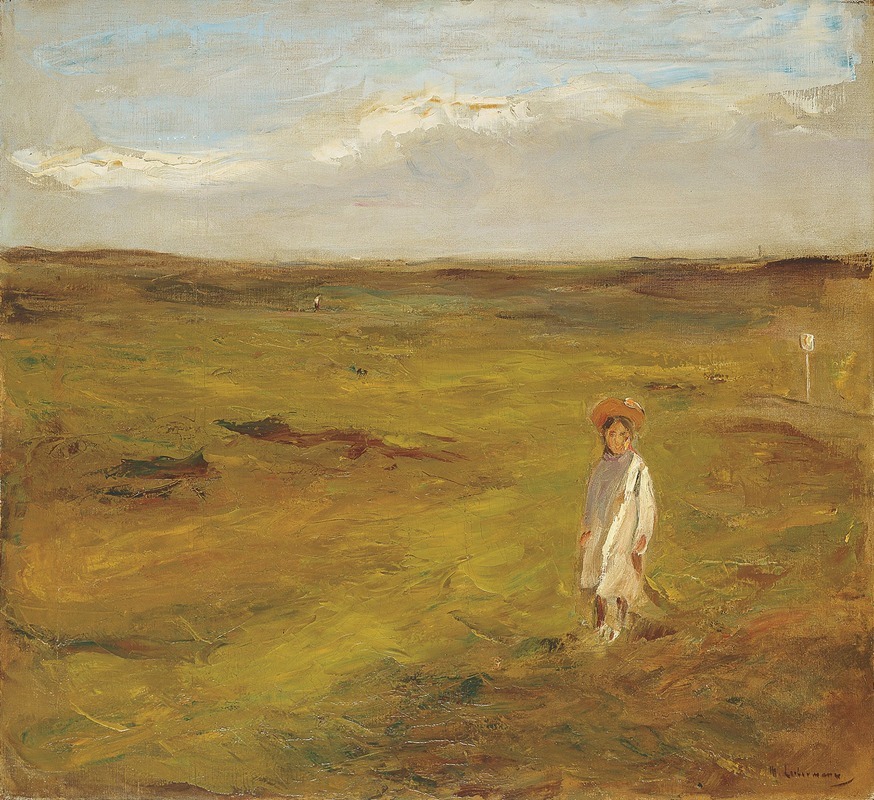
Kind in den Dünen
A hand-painted replica of Max Liebermann’s masterpiece Kind in den Dünen, meticulously crafted by professional artists to capture the true essence of the original. Each piece is created with museum-quality canvas and rare mineral pigments, carefully painted by experienced artists with delicate brushstrokes and rich, layered colors to perfectly recreate the texture of the original artwork. Unlike machine-printed reproductions, this hand-painted version brings the painting to life, infused with the artist’s emotions and skill in every stroke. Whether for personal collection or home decoration, it instantly elevates the artistic atmosphere of any space.
"Kind in den Dünen" (Child in the Dunes) is a painting by the German Impressionist artist Max Liebermann. Created in 1907, this work exemplifies Liebermann's focus on capturing scenes of everyday life, often set in natural, outdoor environments. The painting depicts a young child seated amidst sandy dunes, with sparse vegetation and a soft, light-filled atmosphere. The child, dressed in simple clothing, appears to be absorbed in their own world, embodying a sense of innocence and tranquility.
Max Liebermann (1847–1935) was one of the leading figures of German Impressionism and a prominent member of the Berlin Secession, an art movement that sought to break away from academic traditions. His works often reflected his interest in realism and his admiration for the French Impressionists, particularly Édouard Manet and Claude Monet. Liebermann's art frequently portrayed scenes of leisure, labor, and rural life, emphasizing natural light and loose brushwork.
"Kind in den Dünen" is part of Liebermann's series of works inspired by the landscapes of northern Germany and the Netherlands, regions he visited frequently. The coastal dunes, with their unique interplay of light and shadow, became a recurring motif in his paintings. This particular piece demonstrates Liebermann's skill in capturing the subtleties of light and atmosphere, as well as his ability to convey a sense of quiet introspection.
The painting reflects Liebermann's broader artistic philosophy, which prioritized the depiction of ordinary moments over grand historical or mythological themes. His approach was influenced by the naturalist movement, which sought to portray life as it was, without idealization. In "Kind in den Dünen," this philosophy is evident in the simplicity of the composition and the focus on the child's solitary presence in the landscape.
Today, "Kind in den Dünen" is recognized as a significant example of Liebermann's mature style. The painting is held in a private collection, and its exact location is not publicly disclosed. Liebermann's works, including this piece, continue to be celebrated for their contribution to the development of modern art in Germany and their reflection of the cultural and artistic shifts of the late 19th and early 20th centuries.






